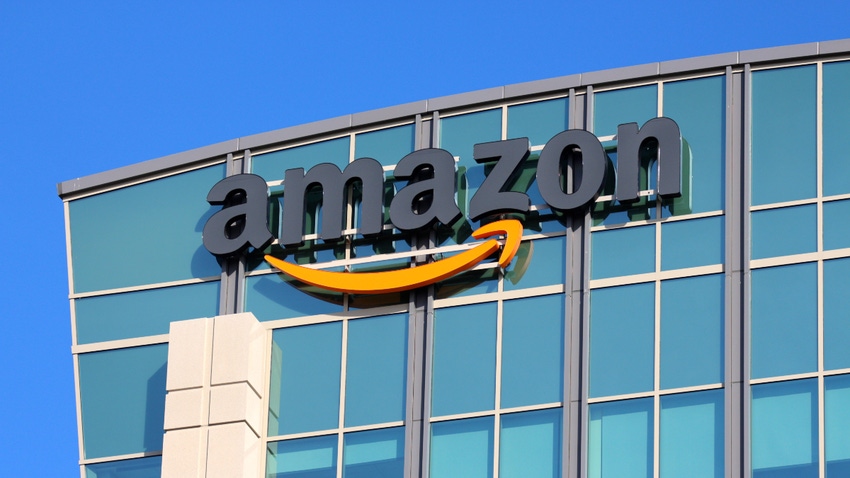Amazon enters postpaid wireless game via Dish's Boost Infinite
Amazon currently sells a variety of prepaid services from the likes of Verizon, Mint Mobile and others. But now it's entering the postpaid side of the business with Dish Network's Boost Infinite.

Online retailing giant Amazon said it will enter the postpaid wireless industry in the US by selling services from Boost Infinite, the primary wireless brand from Dish Network.
Dish officials cheered the news on LinkedIn:
The offering represents a noteworthy new development for both companies. Further, it could signal a tightening of the relationship between Dish (which is building a nationwide 5G network) and Amazon (which is working to expand its telecommunications offerings). Already Dish uses Amazon's cloud to run portions of its 5G network operations.
But the details around Amazon's move into the US postpaid market are decidedly modest. The company will only sell SIM cards from Boost Infinite, meaning that customers must either purchase a new phone elsewhere or use their existing phone for the service. Additionally, the offer runs through the Boost Infinite app and activation system, not through Amazon's extensive online platform. Finally, the companies aren't describing their relationship as exclusive, potentially leaving the door open for Amazon to sell postpaid services from other operators. Amazon currently offers prepaid services from a variety of brands – from Verizon to Mint Mobile – through its vast online marketplace.
"We do not think this offering is aimed to compete directly with AT&T, T-Mobile and Verizon's postpaid products at this point, but rather with the value market, especially as Amazon looks to further expand Prime membership," wrote the financial analysts at Raymond James. Amazon's Prime subscribers are automatically pre-qualified for Boost Infinite's service, and the Raymond James analysts estimated there are roughly 167 million Prime customers in the US.
Regardless, the analysts described the move as "a significant positive" for Dish. "It provides a large distribution channel and helps lower Subscriber Acquisition Costs (SAC) as the service looks to ramp its subscriber base. And we think it could eventually expand to include collections (e.g., Amazon Prime credit card)," they wrote.
Dish undoubtedly has been looking for a corporate win. The company's stock has languished in recent months amid fears the company will run out of funding. Dish's stock had been trending upward in recent days, but fell slightly in trading Wednesday.
The details
Amazon Prime customers can purchase Boost Infinite's SIM kit for $20 (a $5 discount) in order to activate the service. They also can get their first month of service for free. Afterwards the Boost Infinite service costs $25 per month for unlimited talk, text and data up to 30GB, after which point customers' speeds may be slowed. That pricing is the same that Dish used to launch Boost Infinite in December.
It's not clear which network Boost Infinite is using; company officials declined to answer questions on the topic. Dish is in the midst of building its own 5G network, but there are only a handful of phones that can use that network. As a result, Dish has MVNO agreements with both AT&T and T-Mobile. According to one person familiar with the companies' plans, Amazon's Boost Infinite offering currently uses the T-Mobile network.
Typically, prepaid users purchase their wireless services upfront, thereby sidestepping concerns over their credit situation. Postpaid users – which are more common in the US – typically pay their bills at the end of the month, after they use their services. Thus, it's noteworthy that Amazon's Prime customers are pre-qualified for Boost Infinite's service because it indicates that Amazon is handling the credit checking portion of the sales process.
Boost Infinite supports up to five lines per account, all at the $25 per month rate. But customers who want to add more lines to their account must do so through Boost Infinite rather than through Amazon, Cnet noted.
The context
For Dish, the move by Amazon to sell Boost Infinite represents an important new distribution point for its consumer offerings. Dish entered the US wireless industry in 2020 by acquiring roughly 8 million prepaid Boost customers from T-Mobile. Since then, it's been struggling to gain new customers and hold onto existing ones.
A big part of Dish's ultimate strategy is to leverage its MVNO deal with AT&T and T-Mobile in order to buy time for the company to build its 5G network. Eventually Dish plans to shift its mobile customer base onto its 5G network in order to lower its overall costs. But that shift likely won't happen anytime soon considering the relatively small number of phones that support its 5G spectrum bands. For example, the iPhone 14 is the first Apple gadget to support most of Dish's spectrum holdings.
For Amazon, the deal represents an expansion by the tech giant into the wireless industry. Indeed, Amazon last month was rumored to be in discussions for a cheap, or free, wireless offering for its Prime customers.
But Amazon's wireless ambitions stretch far beyond the sale of mobile services to consumers. For example, the company continues to work to sell private 5G connections to enterprise customers through its Amazon Web Services (AWS) cloud division.
More importantly, AWS is also working to convince 5G network operators to store some of their core networking components in the cloud. One of the first operators to do so was Dish. At the time, Dish said doing so would help it sell 5G services to enterprise customers.
"We still think that longer-term, Amazon could play a meaningful role in Dish's enterprise 5G ambitions given its large logistics footprint (e.g., fulfillment centers and transportation) and base of AWS cloud enterprise customers, so it is encouraging to see the relationship expand," wrote the Raymond James analysts this week.
Related posts:
— Mike Dano, Editorial Director, 5G & Mobile Strategies, Light Reading | @mikeddano
About the Author(s)
You May Also Like












